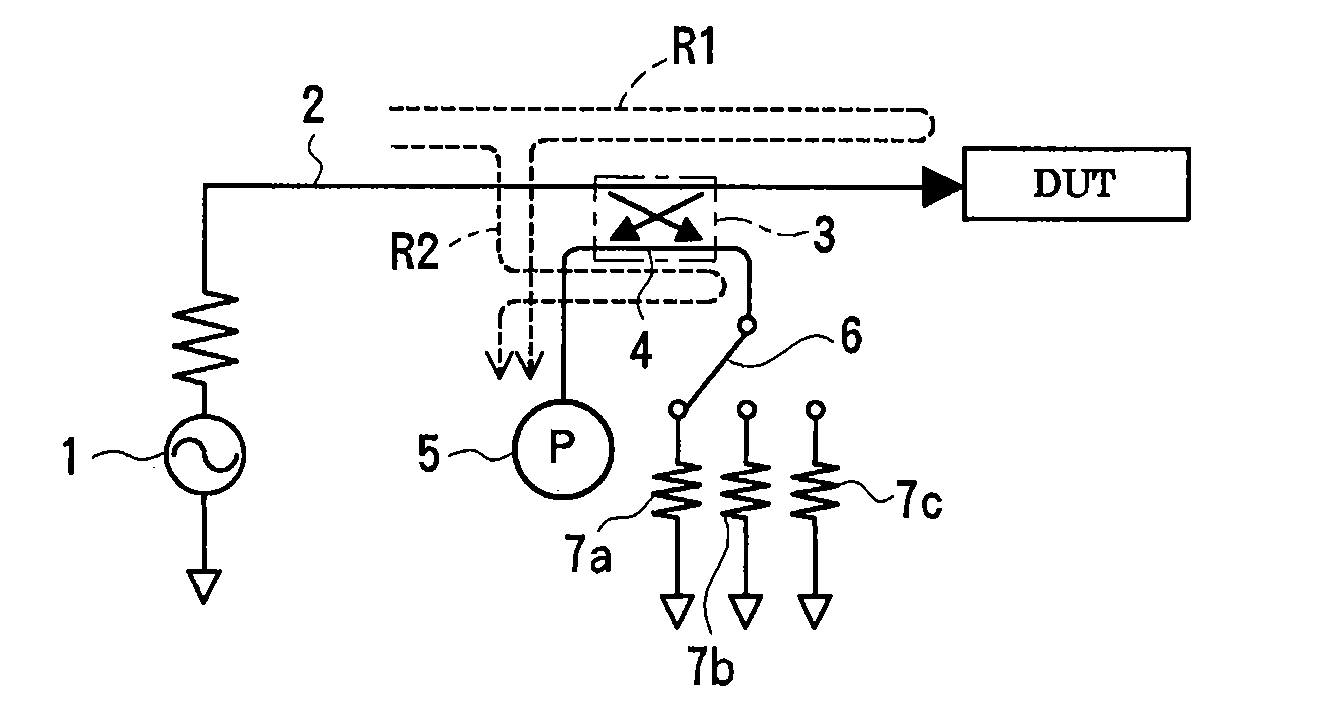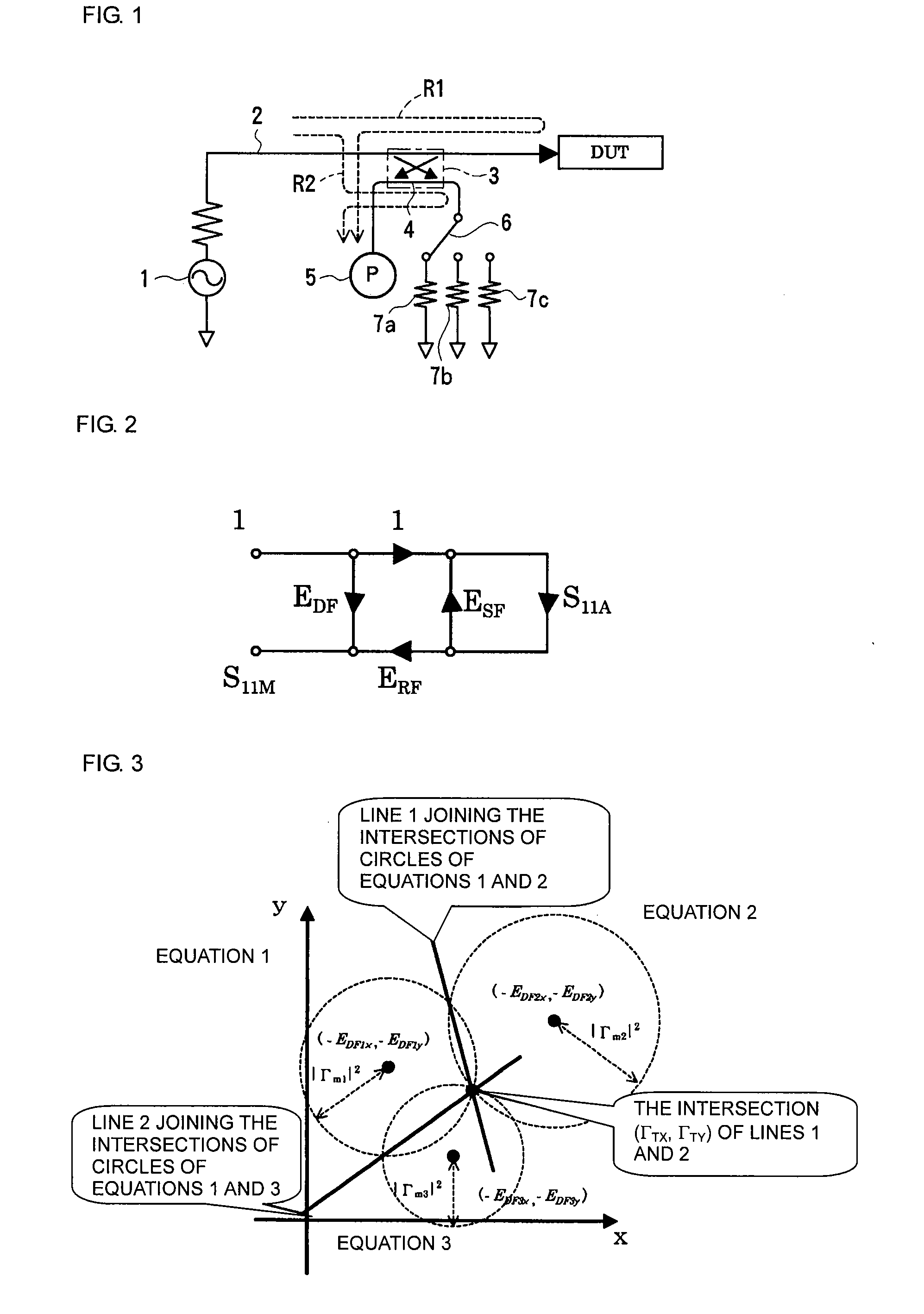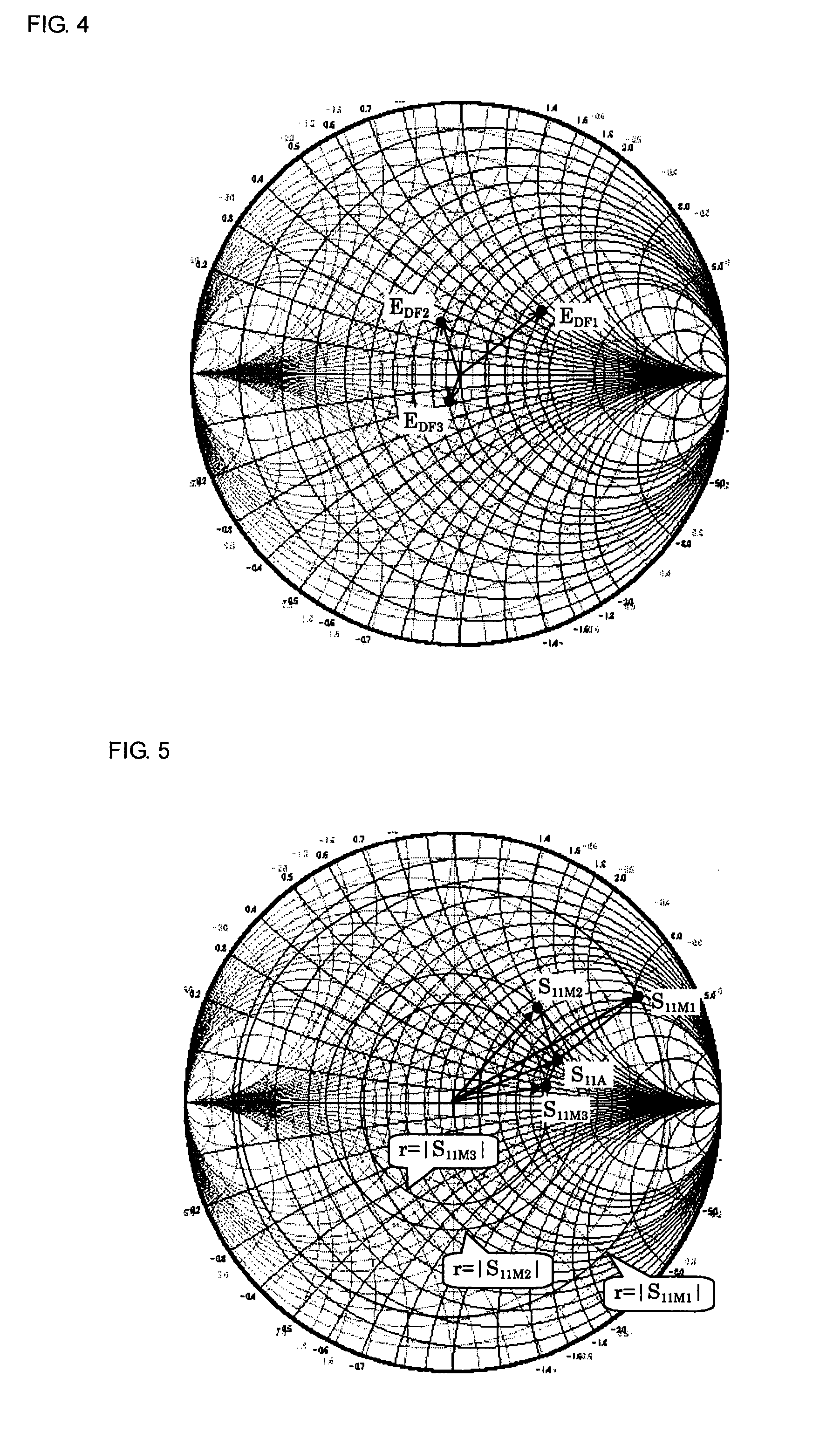Method and Apparatus for Measuring Scattering Coefficient of Device Under Test
- Summary
- Abstract
- Description
- Claims
- Application Information
AI Technical Summary
Benefits of technology
Problems solved by technology
Method used
Image
Examples
first preferred embodiment
[0044]FIG. 1 illustrates an apparatus for measuring a reflection coefficient of a DUT according to a first preferred embodiment of the present invention. A signal generated by a signal source 1 including an oscillator passes through a measurement signal path 2 and is applied to a DUT. A coupler 3 separating part of signals passing through the measurement signal path 2 is disposed in the measurement signal path 2. A first port of an error signal path 4 coupled to the measurement signal path 2 by the coupler 3, the first port being adjacent to the signal source, is connected to an electric-power measuring instrument 5 measuring a reflected wave as a scalar value, such as a power meter. A second port of the error signal path 4, the second port being adjacent to the DUT, is connected to three kinds of directional errors 7a to 7c via a directional selector switch 6. The directional errors 7a to 7c have different reflection phases from each other, and relation values thereof (relative vec...
second preferred embodiment
[0070]FIG. 6 illustrates an apparatus for measuring a transmission coefficient of a DUT according to a second preferred embodiment of the present invention. Measurement signals generated by a signal source 1 are separated into a first measurement signal for a measurement signal path 9 and a second measurement signal for an error signal path 10 by a power splitter 8. The first measurement signal entering the measurement signal path 9 is applied to the DUT. The second measurement signal entering the error signal path 10 is applied to one of three leakage errors 12a to 12c via a leakage selector switch 11. A wave transmitted through the DUT and a wave transmitted through each of the leakage errors 12a to 12c are superimposed, and superimposed signals are each measured as an electric-power value (scalar value) by an electric-power measuring instrument 13. The leakage errors 12a to 12c have different phases of transmitted waves from each other, and relation values (relative vector values...
third preferred embodiment
[0079]FIG. 7 illustrates an example of a one-path two-port measurement system in which the reflection coefficient measurement system illustrated in FIG. 1 and the transmission coefficient measurement system illustrated in FIG. 6 are combined. Measurement signals are separated by a power splitter 8. A first measurement signal is applied to a DUT, and a second measurement signal is applied to one of three leakage errors 12a to 12c via a leakage selector switch 11. A superimposed signal of a wave transmitted through the DUT and a wave transmitted through each of the leakage errors 12a to 12c is measured as an electric-power value (scalar value) by an electric-power measuring instrument 13. A coupler 3 is disposed in a measurement signal path 2. A first port of a signal path coupled to the measurement signal path 2 by the coupler 3, the first port being adjacent to the signal source, is connected to an electric-power measuring instrument 5 measuring a reflected wave as an electric-power...
PUM
 Login to View More
Login to View More Abstract
Description
Claims
Application Information
 Login to View More
Login to View More - R&D
- Intellectual Property
- Life Sciences
- Materials
- Tech Scout
- Unparalleled Data Quality
- Higher Quality Content
- 60% Fewer Hallucinations
Browse by: Latest US Patents, China's latest patents, Technical Efficacy Thesaurus, Application Domain, Technology Topic, Popular Technical Reports.
© 2025 PatSnap. All rights reserved.Legal|Privacy policy|Modern Slavery Act Transparency Statement|Sitemap|About US| Contact US: help@patsnap.com



